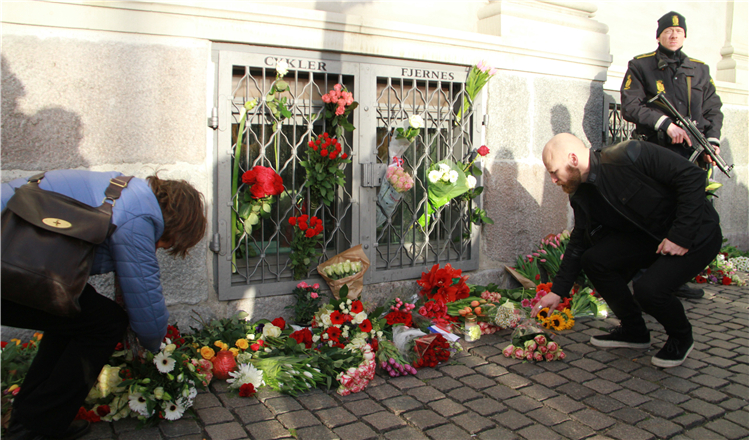Ex-TEPCO executives indicted over Fukushima nuclear disaster
Updated: 2016-02-29 15:57
(Xinhua)
|
||||||||
The arraignments of the top executives include charges that their negligence, following a huge earthquake-triggered tsunami knocking out the key cooling functions of reactors at the nuclear plant in Japan's northeast on March, 11, 2011, resulted in both injury and death.
The officials have been named as Tsunehisa Katsumata, 75, who was chairman of TEPCO at the time of the disaster, and Sakae Muto, 65 and Ichiro Takekuro, 69, who served as the now-embattled utility's vice presidents.
The indictments follow revelations earlier this week that TEPCO had knowledge of multiple meltdowns at the plant's reactors following the tsunami hitting, but intentionally refrained from informing the public of the fact until months later. TEPCO, owner and operator of the six-reactor facility, also fired a communications representative who had suggested that a meltdown of a reactors core may have happened at the time.
The trail of the trio follows a probe by the Tokyo District Prosecutors Office into the matter, after an independent citizen's panel adjudged the executives should be charged for their negligence in the summer of 2014.
The committee found that the executives in questions knew as early as July 2009 that the nuclear plant, located on the Pacific coast in the prefecture, could possibly be hit by an earthquake-triggered tsunami of more than 15-meters high -- such as the one that inundated the plant two years later -- yet did nothing to take preemptive, preventative measures to fortify the facility.
Those with knowledge of the case said Monday that the trial may not start this year, however, as collecting the necessary information, evidence, and overall preparations for the proceedings will be a lengthy process, with the defendants also likely to plead not guilty to the charges.
The panel judged that the executives' dereliction of duty led to the injuries of 13 people and the deaths of 44 people who died in hospital after being evacuated from the plant following the worst commercial nuclear disaster in history.
TEPCO is still grappling with the fallout from the disaster and since 2011 has seen numerous incidents of radioactive leaks at the plant, many of which saw contaminated water flow directly into the Pacific, much to the consternation of the international community.
The latest estimates following surveys at the troubled plant have concluded that some 600,000 tons of radioactive water are still being contained in storage tanks at the plant, some which have overflowed during heavy rain, others of which have sprung leaks with water mixing with radioactive materials in drainage ditches, which connect to the ocean, under the ruptured reactor buildings.
- Panel wants 3 TEPCO executives charged over nuke crisis
- Japan's NRA blast TEPCO for serious safety problems
- Japan brings 2nd nuke complex since Fukushima meltdowns back online
- Japan to bring first nuke plant online since Fukushima disaster
- Japan approves increase in Fukushima compensation to $57 bln
- Japan minister apologizes for Fukushima money gaffe
- Fukushima groundwater being released into Pacific
- Cuba intensifies fight to fend off Zika virus
- UN chief calls for 'prompt, impartial' probe into airstrike on Yemeni market
- Ex-TEPCO executives over Fukushima nuclear disaster
- British PM threatened with 'no confidence vote' over EU referendum
- 70,000 may become trapped in Greece
- Venezuela, Qatar, Saudi Arabia, Russia to meet to stabilize oil market

 Stars arrive at 88th Academy Awards in Hollywood
Stars arrive at 88th Academy Awards in Hollywood
 China has world's largest high-speed rail network
China has world's largest high-speed rail network
 Top moments from Oscars 2016
Top moments from Oscars 2016
 China Daily weekly photos: Feb 20-26
China Daily weekly photos: Feb 20-26
 People view plum blossoms at scenic area in E China
People view plum blossoms at scenic area in E China
 Rural e-commerce developed to promote local products in SW China
Rural e-commerce developed to promote local products in SW China
 Things you should know about the 2016 G20 meeting
Things you should know about the 2016 G20 meeting
 Walk down memory lane: Rural China in 1980s
Walk down memory lane: Rural China in 1980s
Most Viewed
Editor's Picks

|

|

|

|

|

|
Today's Top News
What ends Jeb Bush's White House hopes
Investigation for Nicolas's campaign
Will US-ASEAN meeting be good for region?
Accentuate the positive in Sino-US relations
Dangerous games on peninsula will have no winner
National Art Museum showing 400 puppets in new exhibition
Finest Chinese porcelains expected to fetch over $28 million
Monkey portraits by Chinese ink painting masters
US Weekly

|

|








